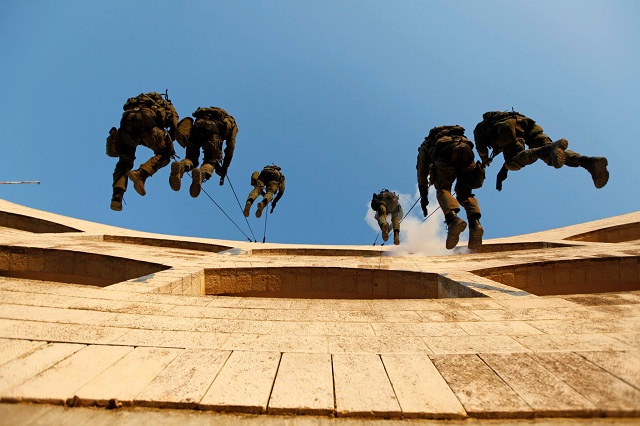The Israeli approach to counterterrorism (CT) is unique because terrorism there is ever-present and takes many forms; it may occur from within Israel, it may take place from Palestinian territories, it may come from across the border or from further afield. The attack may be a one-off suicide bombing or a knife or car rampage or the kidnapping of an Israeli soldier. The terrorists themselves are different too in that they may be Arab, Palestinian, Arab-Israeli or even Japanese.
The evolving nature of the threat led Israeli policymakers to eschew the idea of having an official counterterrorism doctrine. Instead Israel has taken a more organic, holistic approach to CT that relies on innovation and creativity and is aimed at deterring and creating divisions within terror groups, and between the groups and their constituencies through coercion and/or persuasion.
Israel’s approach to its security oscillates between Bitachon Yisodi (fundamental security threats) to Bitachon Shotef (continuous security). What this means is that Israeli CTemploys tactics that are focused on systematically disrupting and weakening the infrastructure of terrorist entities, whether within Israel or beyond its borders. This may include large-scale military operations against terrorist cells or more targeted, special operations.
To deal with the threat, the Israeli CT architecture is multifaceted involving the Israel Defence Forces (IDF), specialist units, the police, the private sector and the broader community. The Israelis are also operating within the social media space, either through an aggressive public diplomacy (Hasbara) campaign aimed at explaining Israel’s CT operations or outlining the threat that Israel faces via the ‘Israel under fire’ hashtag. The IDF’s Information Security Department also carries out counter-intelligence operations aimed at identifying Hamas cyber activists seeking to use social media platforms such as Facebook to extract information from Israeli soldiers.
The origin of this multilayered approach began in the 1950s when the threat came from beyond Israel’s borders. The attacks were then led by fedayeen (irregular forces) based in Jordan and Egypt. These were small units armed with machine guns and grenades who carried out hit-and-run operations. The Israelis responded to these attacks by forming specialist military units such as Sayeret Matkal (General Staff Reconnaissance Unit) and Shayetet 13 (a naval commando unit whose name translates as ‘Flotilla 13’).
From the 1970s the threat evolved from guerrilla warfare to hijacking, kidnapping, suicide bombing, knife attacks, car attacks, smuggling, tunnels and kite terrorism. The IDF has adapted in response, forming specialist military units who now carry out counter-IED, urban warfare and counter-guerrilla warfare operations. These units play key roles when the IDF undertakes major military offensives against terrorist targets as seen with Operation Cast Lead in 2008.
Read the full article by Isaac Kfir at The Strategist.

